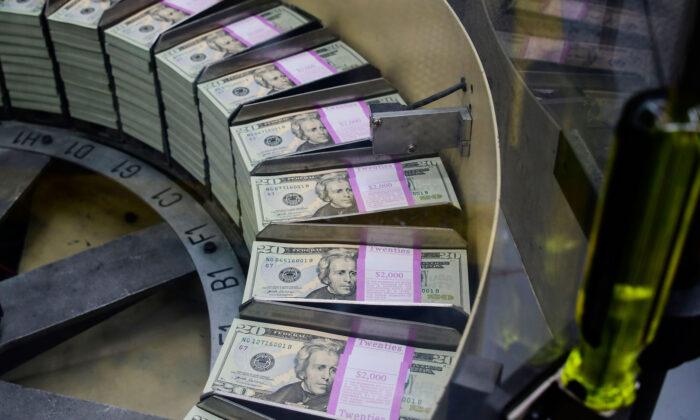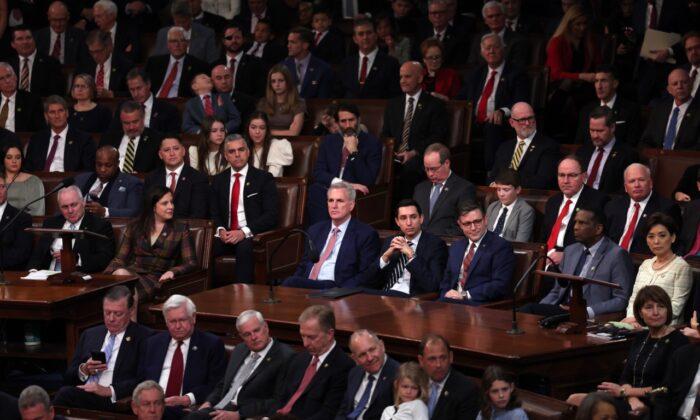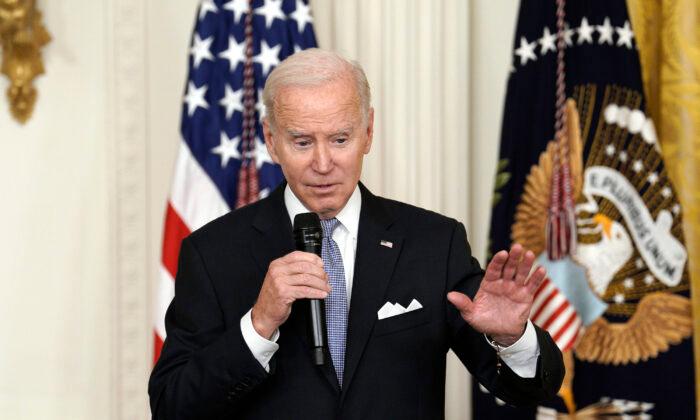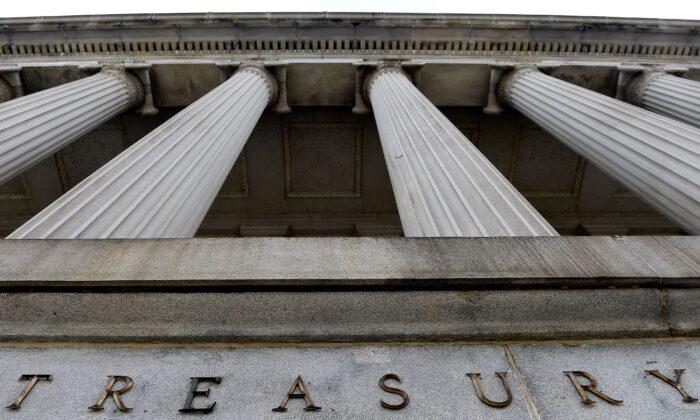President Joe Biden and House Speaker Kevin McCarthy (R-Calif.) met on Feb. 1 to talk about raising the U.S. debt ceiling. However, many Americans may not have a whole grasp on what that is, although oddly, so many have an opinion on what should be done about it.
For example, a recent poll conducted by RMG Research found that 79 percent of Americans think that the debt ceiling should be raised but are divided on whether that should be accompanied by spending cuts.
Of the 1,000 registered voters surveyed, 45 percent said spending cuts should be a prerequisite for raising the limit, and 24 percent said it should be raised with or without cutting spending.
What Is the Debt Ceiling?
The debt ceiling, sometimes called the debt limit, is the total amount of debt the federal government is allowed to have at one time. That limit is set by Congress and can’t be exceeded without congressional approval.
The current U.S. debt ceiling is more than $31 trillion. To be more precise, it’s about $31,381,000,000,000.
Hitting the debt ceiling is like hitting the limit on a credit card. Unless you have cash, you have to stop spending money, even on things you’ve already purchased, such as electricity or phone service.
How Did We Rack Up $31.4 Trillion in Debt?
How has the nation accrued a debt of $31.4 trillion?The short answer is that we’ve spent more money than we’ve received in taxes and other revenues for a long, long time.
The United States began borrowing during the American Revolution and had accumulated $75 million in debt by the start of 1791. We’ve been in debt ever since.
Historically, the national debt has grown the most during wartime. It jumped $2.7 billion during the Civil War, reached $22 billion after World War I, and topped $4 trillion by the end of World War II.
From there, the national debt settled back to around $3 trillion and remained there through the 1970s.
The rest of our $31.4 trillion debt was created between 1982 and today. During that period, the national debt doubled approximately every seven years.

Some of that increase is attributable to unusual circumstances that called for emergency spending, such as in the case of the COVID-19 pandemic.
More often, debt has increased because Congress elected to operate the country on a deficit budget. That means that we made a spending plan that intentionally exceeded our income, planning to borrow money to cover the difference.
Can’t We Just Cut Future Spending?
Raising the debt ceiling is about paying for the past, not financing the future.If you wanted to remodel your kitchen, you might hire a contractor to do the work. You would sign a contract for, let’s say, $5,000. If the contractor trusted you, you might not pay anything upfront.
But when the contractor did the work, you would have to pay. If you didn’t have cash, you might put it on a credit card.
That’s essentially what happens when Congress passes a deficit spending bill. It obligates the country to spend money in the future for a commitment made today.
So when Congress agreed to spend $1.7 trillion in 2023, members knew that would require borrowing money at some point.
What Happens When We Hit the Ceiling?
When you reach the limit on your credit card, you have three choices. You can pay all your bills with cash, ask the bank to raise the limit, or stop spending money.It’s much the same for the government. But since the government planned to spend more than it would receive in revenue, paying cash for everything isn’t an option. Either Congress must raise the debt limit or the U.S. Treasury must stop paying for some things.
Biden has said that he won’t consider any negotiation on the subject of the debt ceiling because failure to raise it would put the “full faith and credit” of the United States at risk.

However, McCarthy and other Republicans are determined to use this occasion to get both political parties to stop overspending the country’s income—or at least to spend less.
The president will release his proposed budget on March 9.
The parties have until early summer to reach an agreement. That’s when the United States will again reach its debt ceiling.





